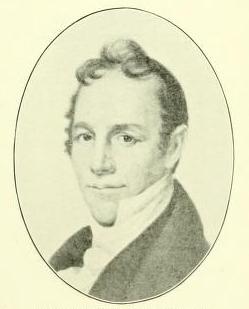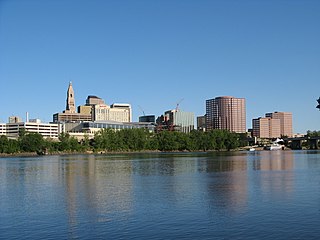New York is a Democratic stronghold and one of the three largest Democratic states alongside California and Illinois.
Samuel Young was an American lawyer and politician.

Henry Seymour was an American merchant, banker and politician from New York.
John Bowman was an American lawyer, banker and politician from New York.
The 1819/1820 United States Senate election in New York was held on February 2, 1819, and January 8, 1820, by the New York State Legislature to elect a U.S. Senator to represent the State of New York in the United States Senate.
The 1821 United States Senate election in New York was held on February 6, 1821, by the New York State Legislature to elect a U.S. Senator to represent the State of New York in the United States Senate.
The 1825/1826 United States Senate election in New York was held on February 1, 1825, and January 14, 1826, by the New York State Legislature to elect a U.S. Senator to represent the State of New York in the United States Senate.
The 1827 United States Senate election in New York was held on February 6, 1827, by the New York State Legislature to elect a U.S. Senator to represent the State of New York in the United States Senate.
The 1821 United States House of Representatives elections in New York were held from April 24 to 26, 1821, to elect 27 U.S. Representatives to represent the State of New York in the United States House of Representatives of the 17th United States Congress.

The 40th New York State Legislature, consisting of the New York State Senate and the New York State Assembly, met from November 5, 1816, to April 15, 1817, during the tenth year of Daniel D. Tompkins's governorship, and while John Tayler was Acting Governor, in Albany.

The 41st New York State Legislature, consisting of the New York State Senate and the New York State Assembly, met from January 27 to April 21, 1818, during the first year of DeWitt Clinton's governorship, in Albany.

The 42nd New York State Legislature, consisting of the New York State Senate and the New York State Assembly, met from January 5 to April 13, 1819, during the second year of DeWitt Clinton's governorship, in Albany.

The 43rd New York State Legislature, consisting of the New York State Senate and the New York State Assembly, met from January 4 to April 14, 1820, during the third year of DeWitt Clinton's governorship, in Albany.

The 44th New York State Legislature, consisting of the New York State Senate and the New York State Assembly, met from November 7, 1820, to April 3, 1821, during the fourth year of DeWitt Clinton's governorship, in Albany.

The 46th New York State Legislature, consisting of the New York State Senate and the New York State Assembly, met from January 7 to April 24, 1823, during the first year of Joseph C. Yates's governorship, in Albany.

The 48th New York State Legislature, consisting of the New York State Senate and the New York State Assembly, met from January 4 to April 21, 1825, during the first year of DeWitt Clinton's second tenure as Governor of New York, in Albany.

The 49th New York State Legislature, consisting of the New York State Senate and the New York State Assembly, met from January 3 to April 18, 1826, during the second year of DeWitt Clinton's second tenure as Governor of New York, in Albany.

The 50th New York State Legislature, consisting of the New York State Senate and the New York State Assembly, met from January 2 to December 4, 1827, during the third year of DeWitt Clinton's second tenure as Governor of New York, in Albany.

The 51st New York State Legislature, consisting of the New York State Senate and the New York State Assembly, met from January 1 to December 10, 1828, during the fourth year of DeWitt Clinton's second tenure as Governor of New York, and—after Clinton's death—while Nathaniel Pitcher was Governor, in Albany.










